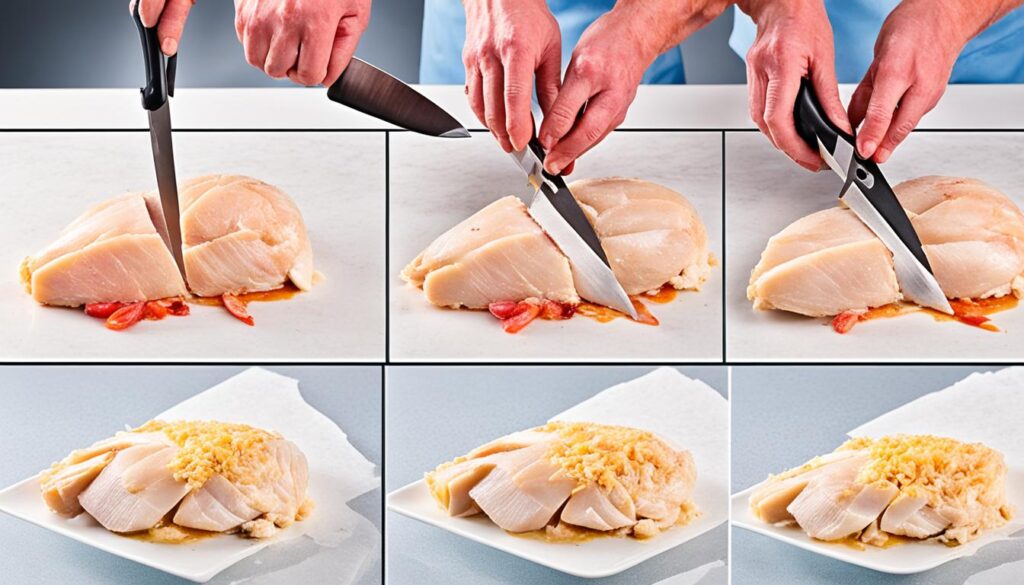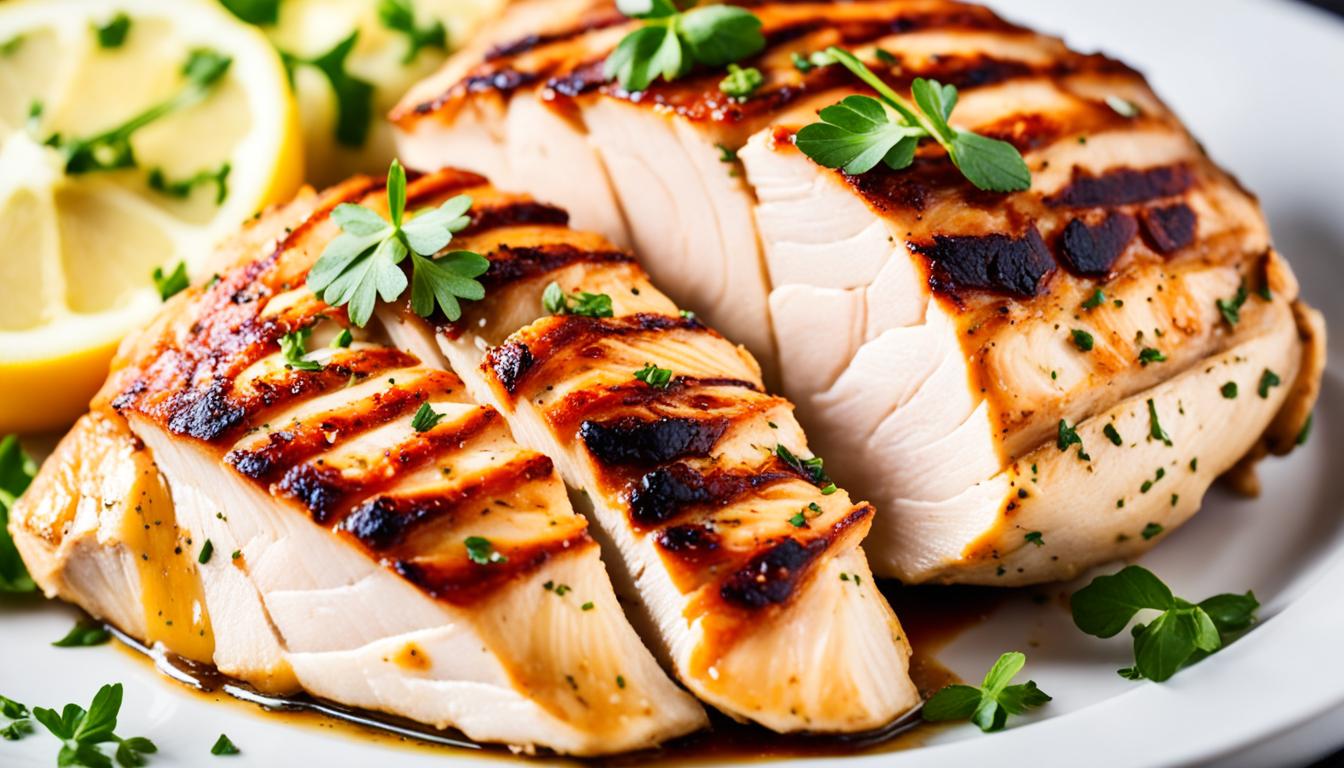Did you know that the airline chicken breast, a popular menu item in-flight, is a unique cut that can elevate your home cooking? With its crispy skin and flavorful meat, this Statler chicken breast, or chicken suprême, is a favorite among chefs and diners alike. The convenience of its distinctive shape, which made it easy for passengers to enjoy during narrow airline seating, has now inspired home cooks to master the art of preparing this versatile poultry cut.
Preparing an airline chicken breast at home may seem a bit more involved than a regular chicken breast, but with the right knife skills, we can unlock the full potential of this culinary delight. By understanding the nuances of this specific cut and honing our poultry handling techniques, we can bring a touch of aviation catering expertise into our own kitchens, impressing our guests and elevating our home-cooked meals.
From mastering the essential knife skills required for precise and efficient cutting to familiarizing ourselves with the food safety protocols and galley equipment training used by cabin crew, we’ll explore the world of airline chicken breast preparation and unlock a new level of culinary sophistication in our home cooking. So, let’s dive in and discover how we can harness the power of this versatile poultry cut and become the ultimate home chefs, inspired by the culinary techniques of the aviation industry.
Mastering the Art of Airline Chicken Breast Preparation
To understand the airline chicken breast cut, it’s helpful to start with a whole chicken. The process involves removing the leg by pulling the leg and thigh away from the breast and cutting through the skin and flesh toward the thigh joint. Then, the Statler chicken breast is removed from the bone by cutting along one side of the breastbone and continuing along the rib cage until the breast is fully separated. When you reach the wing joint, you’ll cut through the joint, leaving the wing attached to the breast. Finally, a cut is made on the back of the joint between the first and second wing bones, and the meat and skin are pulled back to expose a clean bone.
Essential Knife Skills for Airline Chicken Breast
Preparing an airline chicken breast requires a few essential knife skills. A sharp chef’s knife or boning knife is necessary to make smooth, precise cuts through the chicken. Proper knife handling, including holding the knife correctly and maintaining proper grip and stance, is crucial for efficient and safe poultry cutting techniques and culinary knife techniques. Additionally, understanding how to properly break down a whole chicken, including locating and identifying the various joints and bones, is key to efficiently and accurately separating the chicken suprême from the rest of the carcass.
airline chicken breast knife skills
Step-by-Step Guide to Butchering an Airline Chicken Breast
The process of butchering an airline chicken breast begins by placing a whole chicken, breast-side up, on a cutting board. Using a sharp chef’s knife or boning knife, we start by removing the wing by cutting through the joint where the wing meets the drumette. Twist the wing to loosen it until the bone is completely exposed. Next, remove the breast by slicing through the skin as close to the breastbone as possible, using short, smooth cuts to maximize the meat in each breast. Continue cutting through the cartilage to remove the breast with the wing attached. The rest of the chicken can be further broken down by removing the thighs and drumsticks, and the carcass can be reserved for making chicken stock.
Knife Techniques for Precise and Efficient Cutting
When butchering an airline chicken breast, it’s important to use proper knife techniques for precise and efficient cutting. This includes maintaining a firm, steady grip on the knife, using a rocking motion to cleanly slice through the skin and flesh, and making short, smooth cuts to minimize waste and maximize the amount of usable meat. Additionally, understanding the anatomy of the chicken and the location of the various joints and bones can help us navigate the cutting process more efficiently, allowing us to separate the airline chicken breast from the rest of the carcass with ease.
Safety Precautions for Handling Poultry and Knives
When working with raw poultry and sharp knives, it’s essential to follow proper safety protocols. This includes thoroughly washing our hands and work surfaces, using separate cutting boards for raw poultry and other ingredients, and ensuring that our knives are clean and sharp. It’s also important to be mindful of our knife handling, keeping our fingers clear of the blade and using a stable, secure cutting surface to prevent accidents. Following these safety precautions will help us prepare our airline chicken breast safely and efficiently.

Elevating Your Home Cooking with Airline Chicken Breast
With the right knife skills and preparation techniques, we can elevate our home cooking with the use of airline chicken breast. This unique cut of chicken offers a number of advantages, including its attractive presentation, larger portion size, and delicious, crispy skin. By mastering the art of butchering an airline chicken breast, we can create restaurant-quality meals in our own kitchen, impressing our guests and adding a touch of elegance to our home cooking.
Whether we choose to pan-sear, roast, or fry our airline chicken breast, the end result will be a flavorful and visually appealing dish that showcases our culinary expertise. By leveraging the benefits of this specialized poultry cut, we can easily transform our home cooking into an exceptional dining experience that rivals even the most acclaimed restaurants.
With a little practice and the right knife skills, the versatility of the airline chicken breast allows us to explore a wide range of recipes and culinary techniques, ensuring that our home-cooked meals are always elevated to new heights of flavor and presentation.
